
We're counting down to the release of Oppenheimer by looking back at Christopher Nolan's movies in order.
The director's latest project is a typically secretive affair, tracing the development of the atomic bomb. Cillian Murphy plays J. Robert Oppenheimer, the man who sent humanity careering in a dark new direction, and the remarkable supporting cast includes Emily Blunt, Matt Damon, Florence Pugh and Robert Downey Jr.
Clad in fiery vistas that herald the birth of brand-new 20th-century warfare, Oppenheimer is poised to be a feast for the senses and the emotions. Nolan splits the aesthetic of the movie between timeline and colour, promising a truly epic delve into an epochal moment in human history. As expected, Nolan has captured the movie on IMAX cameras, resulting in apocalyptic sequences that promise to take the breath away.
This week, we're examining Nolan's first critical success story, and the movie that put him on the map: Memento.
What is the story of Memento?
Insurance investigator Leonard (Guy Pearce) has a serious problem. Following a violent home invasion where he was hit on the head and his wife was brutally killed, he cannot make any short term memories.
The situation has sent Leonard on a crusade, as he vows to find the man who murdered his wife and reduced him to this state. In order to advance further, Leonard must assemble clues in the form of notes, polaroids, and even tattoos on his body, all of which he hopes will bring him closer to the guilty party.
Along the way, Leonard is alternately aided and manipulated by Teddy (Joe Pantoliano) and barmaid Natalie (Carrie-Anne Moss). Can he trust either of them? And will he find the man who ruined his life?
How was Memento made?
In 1998, young British filmmaker Christopher Nolan made a splash at the Toronto Film Festival with Following. A black-and-white noir thriller, it announced the University College London graduate as a serious-minded director with style and substance to spare.
Following acclaim on the indie festival circuit, Nolan was assigned to direct Memento, adapted from his brother Jonathan's short story. The two had initially discussed the project on a cross-country American road trip from Chicago to Los Angeles, where Jonathan Nolan first fleshed out the idea of a man tormented by short-term memory loss.
The eventual project, Memento, was a hugely ambitious step for Nolan. By way of comparison, the budget for Following was around $250,000, the costumes consisting of the actors' own clothes, and the locations being the homes of friends and family. Memento eventually cost $4 million in total and secured the services of acclaimed L.A. Confidential actor Guy Pearce.
Nolan later told DGA Quarterly: "[The] difference between shooting Following with a group of friends wearing our own clothes and my mum making sandwiches to spending $4 million of somebody else's money on Memento and having a crew of a hundred people is, to this day, by far the biggest leap I've ever made."
Jonathan Nolan's short story 'Memento Mori' centres on a condition known as anterograde amnesia – essentially the inability to create short-term memories, even while long-term ones remain embedded in the consciousness. In fact, the development of both the short story and the film script went in tandem, with Christopher Nolan eventually alighting on the idea to film half of the story on the big screen in a backward-moving fashion.
It was a radical and brilliant translation of his brother's initial story, retaining its philosophical and emotional impact while also standing on its own as a technical achievement. Memento, therefore, developed as a film along two narrative lines. In one section (colourised), we move backward in increments, forcing us to engage with Leonard's short-term memory loss. Another segment (black and white) moves forward in a conventional manner, as Leonard talks to an unseen figure on a phone in a motel room.
It, therefore, becomes clear that the (non-chronological) ending of the movie will take place in the middle of the narrative where these two tangents intersect. Such an audacious move was the first indication in Nolan's oeuvre of how willing he was to play around with notions of time and perception. Here's Nolan himself explaining Memento's structure.
Little wonder that studio executive Aaron Ryder, of Newmarket Films who distributed the movie, described the script as "perhaps the most innovative" he had ever seen. However, the real genius of Memento resides not in its structure but in its emotional pull.
Not only does the fragmentary, non-linear nature of the narrative simulate the physical and cerebral impact of anterograde amnesia. It also, brilliantly, establishes the melancholy and isolation that comes with it, something that's amplified by Pearce's haunting performance, the noirish, somewhat seedy onslaught of locations, and the quietly percolating tension of David Julyan's score.
Come the devastating conclusion (which, lest we forget, occurs midway through – the real ending is glimpsed at the start), it's clear this is much more than a memory movie. It's also a moving story of self-deception, of a self-styled vigilante whose perception of time and identity has shattered like so many glass fragments. Such concerns would continue to obsess Nolan in his later work, including the blockbusting Dark Knight trilogy.
Although Nolan's iteration of Bruce Wayne/Batman isn't crippled by short-term memory loss. there are clear comparisons to be drawn between the DC icon and Leonard. Both exist in a twilight world of their own making, haunted by a guilty secret and forever battling with the slippery nature of time. (Just look at the nefarious schemes of Heath Ledger's Joker in The Dark Knight as an example of that.)
The film was briskly shot in less than a month in and around Los Angeles. Pearce beat out the A-list likes of Brad Pitt to claim the role of Leonard, and he's ably assisted by an excellent supporting cast. In particular, Carrie-Anne Moss dazzles as Natalie, who can turn from sympathetic to vicious on a dime when she suspects the hapless Leonard can assist in her own personal cause. It makes one lament that we've seen little of her on the big screen in the two decades since.
The film also demonstrates Nolan's underrated capacity for wry humor. Mark Boone Jr. (who would later turn up in Batman Begins) is very funny as the duplicitous motel owner who exploits Leonard's condition to rent him multiple rooms. And the ever-reliable Joe Pantoliano keeps as guessing as Teddy, the man who may or may not lead Leonard to the killer only known as 'John G' (a name stemming from Jonathan Nolan's Georgetown University teacher, John Gavin).
Groundhog Day's Stephen Tobolowsky also makes a big impact as Sammy Jankis, a character who appears in black-and-white flashback sequences, and whose story is relayed anecdotally by Leonard, with devastating consequences.
The audacity of the movie is immediately apparent during the opening credits sequence. Given the complex nature of the scenario, Nolan has to arrest our attention very quickly, and that he does with a shot of a polaroid developing in reverse, working backward to the point before a key character is shot in the head.
Nolan is now famed for his big-budget technical ingenuity on the likes of Inception, with its celebrated revolving hallway fight sequence. And the complex shot where the cartridge of Leonard's gun flies upwards was, perhaps, Nolan's first test of the optical techniques that would soar in his later films: "It was the height of complexity... An optical to make a backward running shot forwards, and the forwards shot is a simulation of a backward shot."
Yet this is an early Nolan movie that doesn't rely on trickery or effects for its impact. It's bracing to go back and watch Memento now, to be reminded of a Nolan movie that doesn't have a massive budget or flashy special effects to spare.
In this instance, the story itself is the greatest effect, launching a devastating rug pull to craft a modern-day tragedy. Nolan has since demonstrated his command of ambitiously staged, mega-budget projects like Inception, Interstellar and Dunkirk. Still, the quietly impactful qualities of Memento earmark it as one of his finest films.
How was Memento received?
Memento was greeted with worldwide acclaim, and Nolan was propelled to an Oscar nomination for Best Adapted Screenplay. (He would lose that to Stephen Gaghan for Traffic, and it would be another 17 years, astonishingly, before Nolan received his first directing nomination for Dunkirk.)
Variety said the film "deconstructs time and space with Einstein-caliber dexterity in the service of a delectably disturbing tale of revenge". Meanwhile, Owen Gleiberman of Entertainment Weekly described Nolan as "a moody craftsman of dazzling vision and skill". And The A.V. Club said: "The astonishing payoff takes the film to another level entirely, unleashing a battery of existential questions that shed new light on everything that precedes it."
The film's critical acclaim, Oscar attention, and box office success ($39 million against its $4 million budget) opened doors for Nolan. Memento set down the atmospherics and thematic obsessions of all his later movies, including the magnificently tricksy magician thriller The Prestige in 2006.
In a further indication of the film's impact, in 2005, the screenplay was ranked #100 out of the 101 Greatest Screenplays compiled by the Writers Guild of America. And in 2017, the US Library of Congress selected Memento for preservation in the National Film Registry for being "culturally, historically or aesthetically significant".
What was the next Christopher Nolan movie?
Insomnia, starring Al Pacino, Robin Williams and Hilary Swank, was Nolan's next film.
Oppenheimer is scheduled for release on July 21st. Click the link below to get your tickets and let us know what your favourite Christopher Nolan movie is @Cineworld.
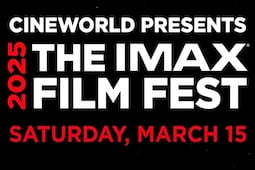
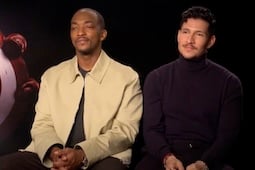

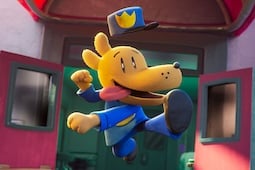
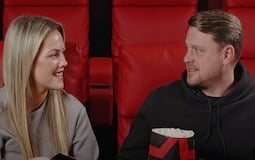

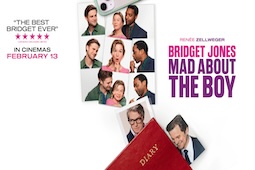
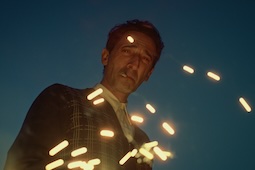

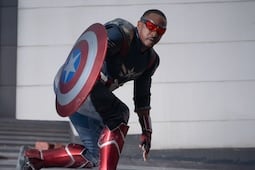




.jpg)
.png)






